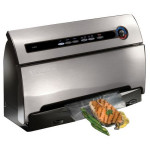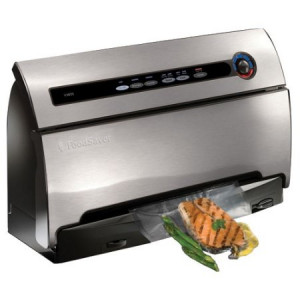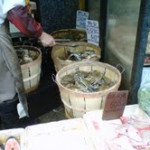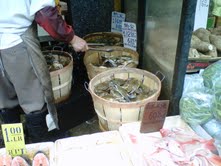If you want to lower your risk of heart disease and lose weight, without feeling deprived, the Mediterranean diet just might be the plan for you. The Mediterranean diet is known for being one of the healthiest eating patterns and one of the easiest plans to follow. In fact, research has shown that it can lower bad cholesterol, lower risk for certain types of cancer, and even improve brain health. The Mediterranean diet doesn’t call for eliminating entire food groups, but encourages smart choices from each.
GRAINS
Many of the grains you will find available in the Mediterranean diet, like barley and buckwheat, are whole grains, which have so many health benefits. Whole grains are not only packed with heart-healthy vitamins and antioxidants, they also contain fiber. Fiber is good for digestive health and heart health, as it can help lower LDL cholesterol (the type of cholesterol that causes heart disease). The Mediterranean diet also encourages enjoying whole-grain breads with olive oil instead of butter because of the heart-health benefits.
FRUITS & VEGETABLES
The diet places an emphasis on consuming plenty of fruits and vegetables. Cucumbers, tomatoes, kale, onions, bell peppers, broccoli, and spinach are all great examples. Combining vegetables with whole grains, in a pasta salad or couscous for example, is a great way to enjoy both. Fruits such as berries, apples, melons, and figs all make great snack or even dessert options. For breakfast you can easily combine fruits with whole grains for a breakfast muesli or try blueberry pancakes made with buckwheat.
PROTEIN
Protein from lean sources such as poultry and seafood are encouraged at least twice a week. However, red meat is supposed to be limited to only a few times per month. Seafood is encouraged because of the heart healthy fats, which are good for brain and heart health. Lean poultry is encouraged because it’s low in saturated fat, but high in protein, which is good for muscle building and satiety. Lemon chicken salad or Tuscan chicken stew would both be great dishes to include on the plan.
DAIRY
Dairy is allowed on the Mediterranean diet, but moderation is key. Instead of fat-free or sugar-free yogurt, switch to plain Greek yogurt, which is lower in sugar, but higher in protein. Low-fat milk and cheeses like feta and brie are also allowed, but moderation is encouraged because of their saturated fat and sodium content. For a simple and healthy weeknight dinner, try combining grilled chicken kabobs with a lemon-dill Greek yogurt dipping sauce.
NUTS & LEGUMES
Nuts, seeds, and legumes are encouraged because they contain heart-healthy fats and fiber. Almonds, walnuts, cashews, peanuts, and sesame seeds can be enjoyed as a snack or sprinkled on vegetables or hot cereals. Legumes, such as split peas and red lentils, are great in soups, stews or on top of salads. Try making hummus at home by using chickpeas, olive oil, and lemon juice, then enjoy it with grilled chicken, sliced bell peppers, and whole-wheat pita bread.
HEART-HEALTHY FATS
Saturated fats like butter are discouraged on the Mediterranean diet, which instead urges heart-healthy fats from olive oil, nuts, seeds, and avocados. Heart-healthy fats can actually help raise HDL cholesterol, which is the good cholesterol that our bodies make in order to fight heart disease. To incorporate them, opt for a baked potato with a drizzle of olive oil, or try adding diced avocado to green salads with grilled chicken. If creamy chicken salad is more your pace, serve it with chopped olives.
SEASONINGS
Instead of using salt to season your dishes, the use of herbs and spices is highly encouraged on the Mediterranean diet. Garlic, rosemary, thyme, sage, mint, and basil are all great flavors to add to simply grilled chicken or green salads. Citrus juice from lemons, limes, and oranges can also add flavor that’s perfect for salads and marinades. Try experimenting at home with different seasonings, and find what works for you.
VARIETY & BALANCE
The Mediterranean diet has a lot to offer in terms of variety and health benefits. In additions to focusing on making smart choices, the plan also encourages family meals and making time for physical activity. Lean protein, whole grains, fruits, vegetables, and low-fat dairy are all smart choices that can help you maintain a Mediterranean-style eating pattern. One you and your family can stick to.
“Work With What You Got!”
©Tiny New York Kitchen © 2019 All Rights Reserved
Paleo Diet
The Paleo Diet (short for Paleolithic) is fashioned around the eating habits and available foods of our hunter-gatherer ancestors. These ancestors had to nourish themselves with the meat, fish, fruits, vegetables, nuts, and fats available to them in nature. With the benefit of large supermarkets, it’s easy today to mimic these foods in wider variety. Specific recommendations for eating Paleo will vary; however, the main ideas are the same: Reduce the risk of debilitating diseases and optimize health by eating whole, fresh, unprocessed foods and avoid foods that were not available prior to the advent of modern agriculture.
Research studies looking at the Paleo Diet have noted that eating a Paleo Diet for a short term improved the glucose control and lipid profiles in people with type 2 diabetes, compared to eating a diet containing low-fat dairy, moderate salt intake, whole grains, and legumes. Additional research indicates similar results may be possible in people without type 2 diabetes as well. The Paleo diet may result in higher levels of satiety (fullness) throughout the day when compared with a low-fat, low-calorie diet.
Paleo Do’s
Eat plenty of non-starchy vegetables and fruits.
Make fresh meat, poultry, fish, and seafood your primary sources calories.
Avoid highly processed meats that contain preservatives, artificial flavors, and sugar, such as some sausages, bacon, deli meats, and smoked fish products.
Consume nuts and seeds.
Use coconut oil, grass-fed butter, olive oil, avocado oil, nut and seed oils, and animal fats, such as goose fat or duck fat, for cooking and eating.
Balance the intake of acid-producing foods (meats, fish, salt, and cheese) with base-producing foods (fruits and vegetables) for optimal health.
Use sea salt to season foods, but try to decrease sodium intake in general.
Paleo Don’ts
Consume highly processed packaged foods.
Get heavy handed with the salt shaker.
Eat grains of any kinds. Quinoa, bulgur, rice, wheat, bread, pasta, etc., are all out.
Consume sugar (including honey and maple syrup), sweets, candy, or desserts.
Use artificial sweeteners, such as monk fruit extract, stevia, NutraSweet or Equal (aspartame), Splenda (sucralose), or sugar alcohols, such as xylitol, sorbitol, or maltitol.
Eat legumes, beans, peas, lentils, or soy, or foods make from soybeans.
Use canola or soybean oils or consume hydrogenated oils (trans fats).
Consume dairy, with the exception of fermented dairy or raw milk cheese on occasion.
“Work With What You Got!”
© Victoria Hart Glavin Tiny New York Kitchen © 2016 All Rights Reserved
Ways To Resist Overeating During The Holidays
Tiny New York Kitchen’s new motto is that December is the new January! With countless cocktail parties, cookie exchanges, and holiday meals this time of year, even the most responsible eaters can be tempted to go all out. Here are a few tips that can prevent total diet derailment, and still enjoy yourself, during the holiday season.
Fill your fridge with healthy, protein-rich snacks that will fill you up and keep you full so that you are less likely to indulge during holiday festivities.
Decide which temptations you would like to resist and to what degree. Remember moderation is key!
Indulge wisely. Allow yourself to enjoy those must-have treats that you look forward to all year long. Whether it’s eggnog, mashed potatoes, pecan pie, or red velvet cake – keep in mind that there is no need for an all-out binge-fest. Enjoy a reasonable yet rewarding amount of holiday foods that you absolutely love. Remember that no single meal will wreck your waistline.
Pay attention to how much water you are drinking. Try and consume 8 to 10 glasses of water per day.
Hit the gym. This way if you do indulge a bit at least it can be somewhat “guilt-free.”
Eat breakfast! When you skip breakfast you set yourself up to eat more at the next meal. Whatever you do, eat breakfast!
To recover the day after “food hangover” feeling that follows a rich meal, eat a normal breakfast with protein, such as yogurt or eggs, the next morning. The rest of the day, avoid refined carbs, drink at least 8 to 10 glasses of water to flush out the sodium. Also, fill up on “clean” foods such as fruits, vegetables, and protein.
Freeze those leftovers. Have leftover pecan pie? Freeze it! Storing tempting foods in the freezer to keep them out of sight means you’re much less likely to eat them since you’d have to defrost them first.
Be a smart snacker! Before you head out to those holiday parties, have a nibble of something so you don’t risk becoming starved. A handful of nuts, a mozzarella stick, Greek yogurt, or protein bar will work wonders.
Double up on those drinks! When you arrive at a party, start with a non-alcoholic drink to quench your thirst. Then have a glass of wine, champagne, or cocktail, but always alternate with zero-calorie liquids such as water or club soda. You’ll feel much better at the end of the night, and certainly the next day.
It’s ok to tell lies, but do it politely, of course. It’s hard to say “no” to your boss or your nana when they offer you a treat. Tell them thank you and take it. Tell them how delicious it looks, but that you’ve just eaten and are going to save it for later. Wrap it up and take it with you. If it ends up in the trash or given to someone else then that’s A-Okay!
If you’re going to a holiday party, offer to bring a healthy dish that you love. Bringing something healthy that you love will guarantee that there is something healthy that you can fill your plate with. It will also give you a chance to show your friends, family or coworkers that healthy food can taste great.
Get Up, Stand Up! When you’re at a party or buffet, get one plate, and then step away from the food table, but stay on your feet! Standing up helps with digestion and makes it more difficult to keep piling food on your plate, and burn calories.
Get thyself distracted! After a holiday meal, get your mind off food by offering to help clear the table or do the dishes. Chew a piece of gum or pop a breath mint. Its kind of like brushing your teeth so that you won’t be tempted to ruin your fresh breath for another piece of pecan pie.
Cut those serving portions down. There is no need to ruin a family recipe by reducing sugar or cutting out fatty ingredients. Instead make the real version of your great-grandmother’s famous date-nut cake, but cut it into 18 small slices rather than 10 giant pieces.
If you do overeat don’t beat yourself up, acknowledge it and then let it go. If you do go a little crazy at a party, it’s really not helpful to beat yourself up about it. Each day and each party is like a “reset,” it’s a chance to try again.
Happy Holidays!
"Work With What You Got!”
© Victoria Hart Glavin Tiny New York Kitchen
Freezing is an easy way to enjoy fruits and vegetables from gardens or farmers’ markets well into the winter. There are a variety of freezer bags to use for storing and freezing. I think that using a vacuum sealer is the best freezer method out there. Vacuum sealers protect foods by removing the extra air and creating a tight teal. If you want to preserve your fruits, vegetables, and meats through long-term freezing, a vacuum sealer is an investment to consider. Conventional storage bags and containers trap air in the container with the food, which can cause damage from frost and freezer burn. Because the sealer sucks all the air out of the bag before creating a tight seal, the food in the bags is better protected against the elements. A vacuum sealer costs between $75 and $200 and requires the purchase of special bags designed for this use. Besides preserving garden produce, this is a great tool to help you maximize the shelf life of other food items you buy in bulk at club stores or on sale.
I happened to be in the Lower East Side today and had to go through China Town. I always find it interesting to see the fruit & vegetable stands, the fish stands and the chickens hanging in the storefront windows. Those are live crabs that the fishmonger kept picking up with giant tongs and throwing them in the baskets.
















